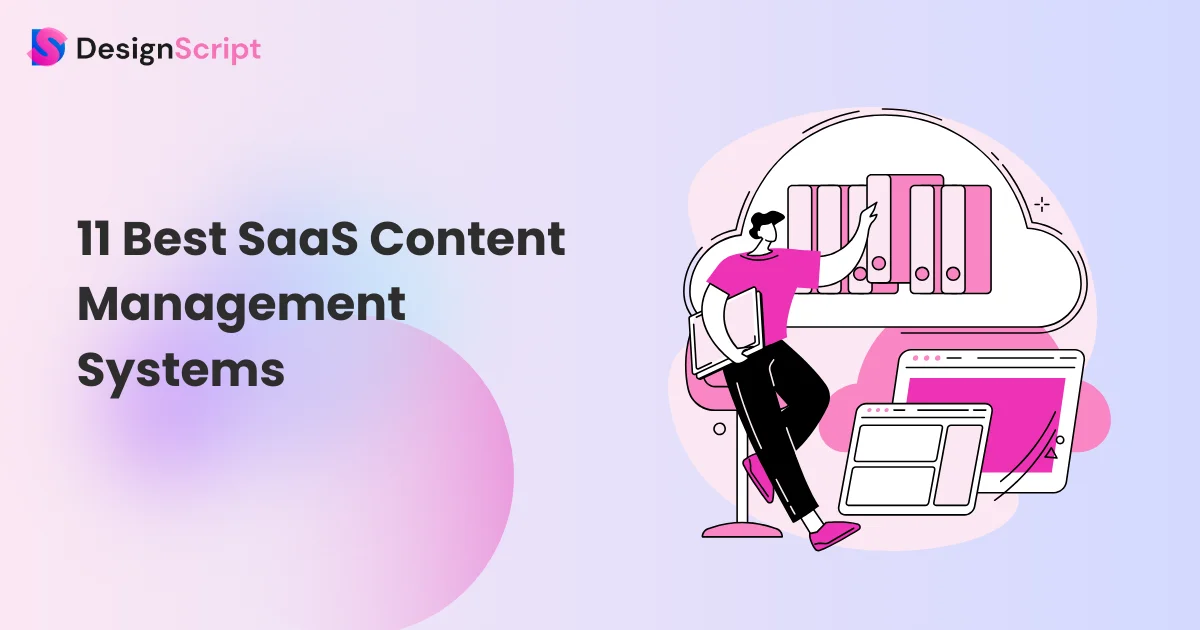11 Best SaaS Content Management Systems
57% of B2B marketers say content provides them solid leads; however, do you need help to keep your website content fresh and engaging? In today’s digital age, a robust content management system (CMS) is crucial for businesses of all sizes. However, with many SaaS CMS options available, choosing the right one can feel overwhelming.
Fear not—we’re here to help! This blog post examines the 11 best SaaS content management systems, outlining their key features, pricing structures, and unique strengths.
By the end, you’ll be a master content curator with the perfect SaaS content management systems to conquer the digital world!
Table of Contents
What is a SaaS content management system?
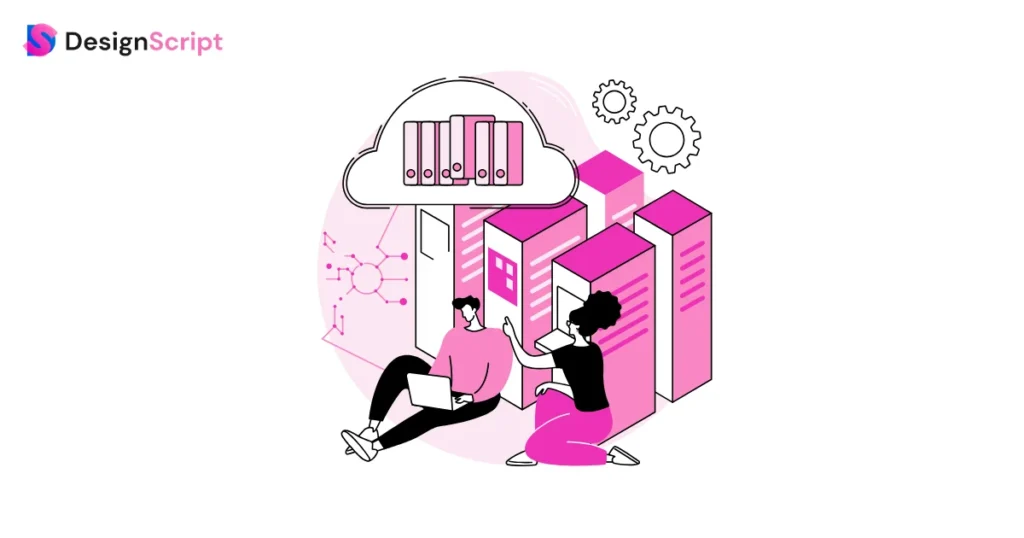
Imagine a user-friendly tool that keeps your website content fresh and organized, like a magic online filing cabinet for your words and ideas. That’s what a SaaS content management system does!
- SaaS stands for “Software as a Service,” meaning you access the content management systems through a web browser, no software downloads required. Think of it like using Gmail or Youtube – everything runs online!
- A content management system is a platform specifically designed to manage website content. This means creating new blog posts, editing existing pages, adding images and videos, all in one user-friendly spot.
- So, a SaaS content management system combines the ease of cloud-based access with the power of a dedicated content management system. With a SaaS content management system, you get the benefits of a powerful tool without the hassle of installing or maintaining software yourself.
A SaaS content management system is your one-stop shop for creating and maintaining a dynamic website, without any IT headaches. It’s perfect for businesses of all sizes who want to keep their website content fresh and engaging.
Best 11 SaaS Content Management Systems
In today’s digital age, a user-friendly and robust content management system (CMS) is vital for businesses of all sizes. But with a vast array of SaaS content management system options available, choosing the right one can be a challenge.
1. Wix
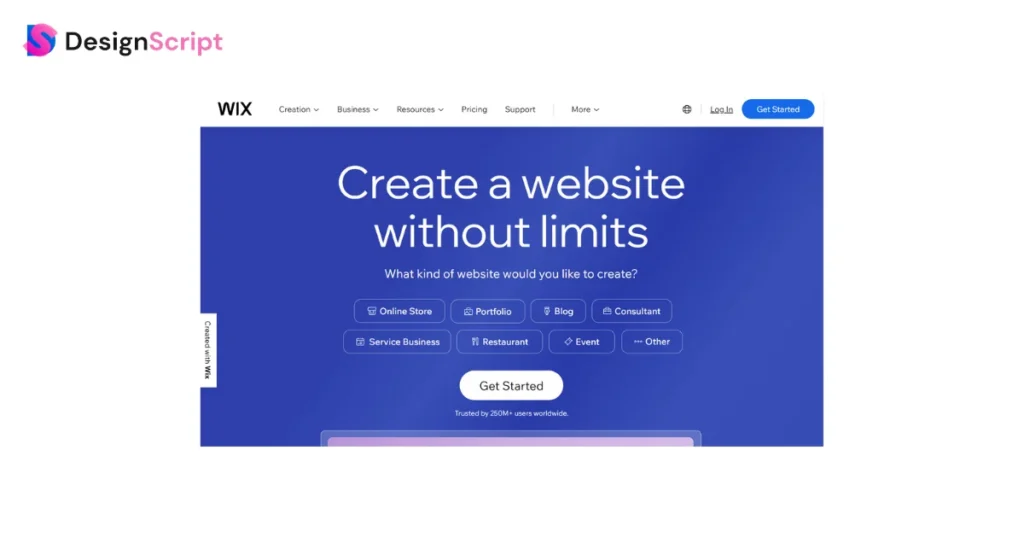
Wix is a popular SaaS content management system known for its user-friendly drag-and-drop interface. This means anyone, even with no coding experience, can create a professional website. They offer a large library of beautiful templates designed for various industries, so you can get started quickly. Wix’s pricing structure is straightforward with plans catering to individual needs and features like storage and bandwidth. If you’re a beginner looking for an easy-to-use platform to build a great website, Wix is a strong contender.
2. WordPress
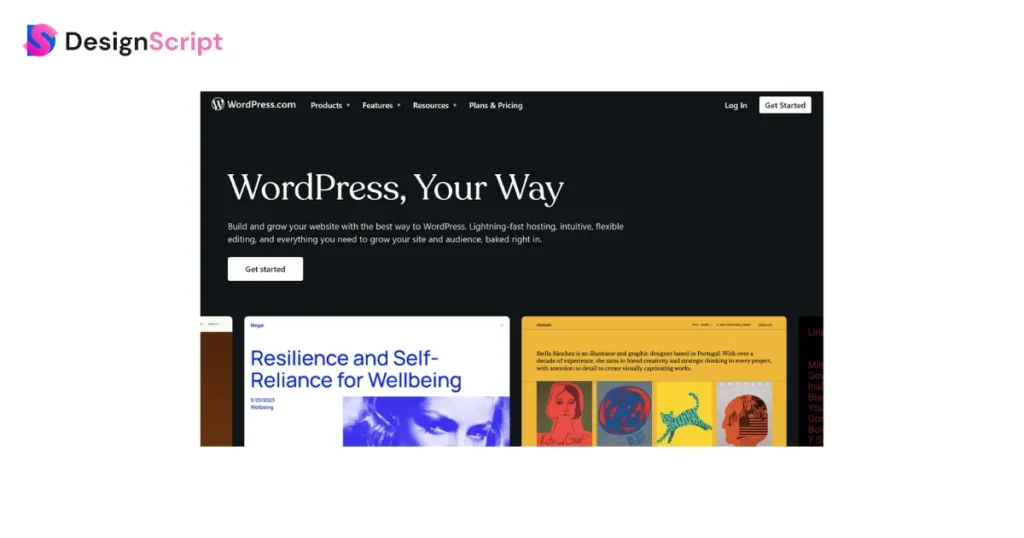
WordPress remains the undisputed heavyweight in the SaaS content management system world. It empowers millions of websites globally with its powerful and versatile platform. While it might have a slightly steeper learning curve compared to drag-and-drop builders, its true strength lies in its endless customization. A massive library of plugins and themes lets you tailor your website to your exact needs and vision. WordPress itself is free to use, but keep in mind you’ll need to pay for web hosting and potentially premium plugins or themes. If you’re looking for a user-friendly platform with the potential to grow alongside your website, WordPress is a strong contender.
3. Joomla
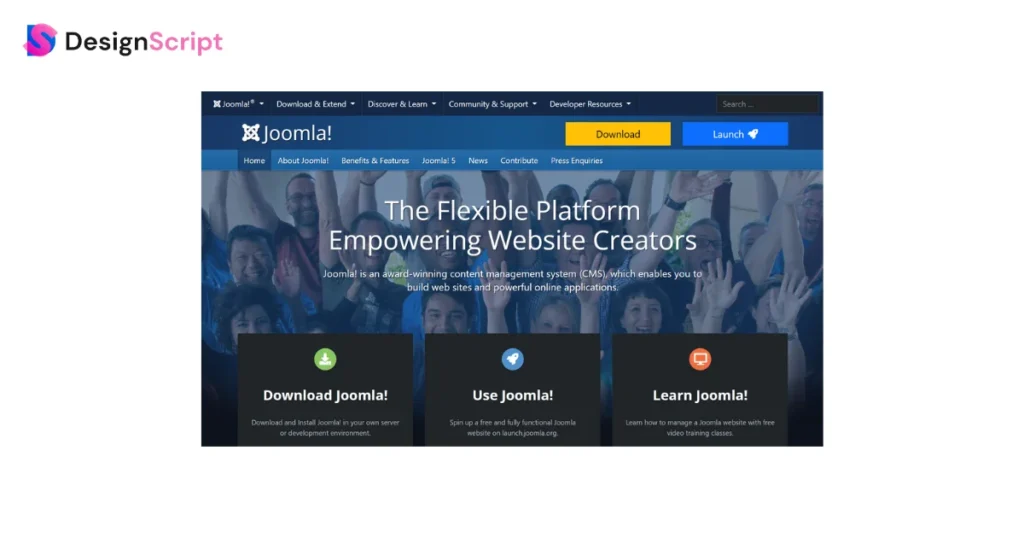
Joomla sits comfortably between user-friendly website builders and powerful developer-focused content management system options. This open-source platform offers a good range of built-in features out of the box, making it suitable for websites with more complex needs than those suited for Wix. Compared to WordPress, Joomla has a slightly steeper learning curve. However, its strength lies in achieving a balance between ease of use and flexibility. Joomla is completely free to use, but you’ll need to factor in web hosting costs.
4. Drupal
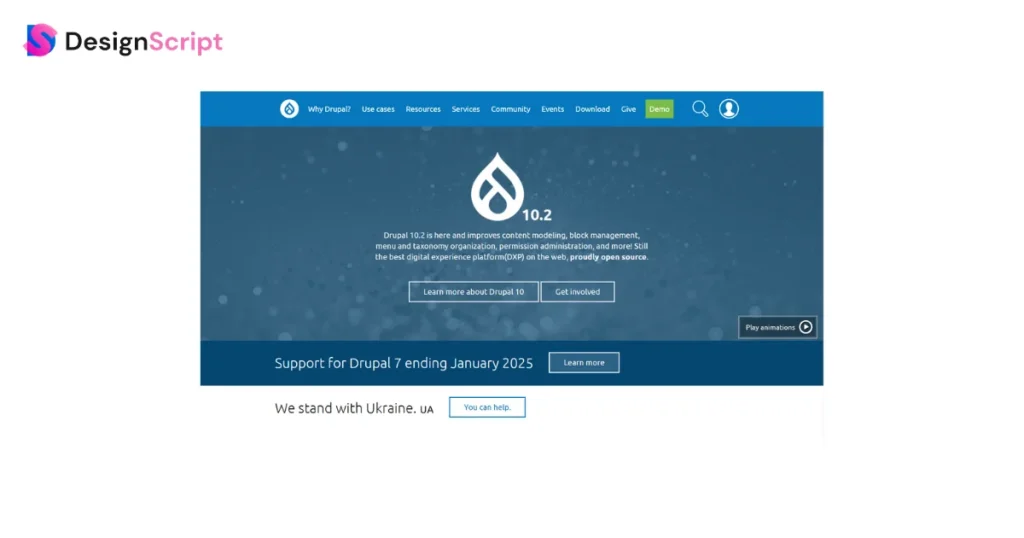
Drupal isn’t your average drag-and-drop website builder. It caters to a different breed: complex websites with demanding content needs. Imagine educational institutions, government sites, or high-traffic news platforms. Drupal thrives in these environments, renowned for its iron-clad security and ability to handle massive amounts of information. While it has a steeper learning curve, this trade-off grants you immense power. Unlike templated options, Drupal lets you build your website exactly how you envision it, with the muscle to grow and adapt over time. Drupal itself is free to use, but keep in mind you might need additional help from a developer to unleash its full potential. If robust security and ultimate control over your website are paramount, Drupal is a powerful option to consider.
5. Shopify
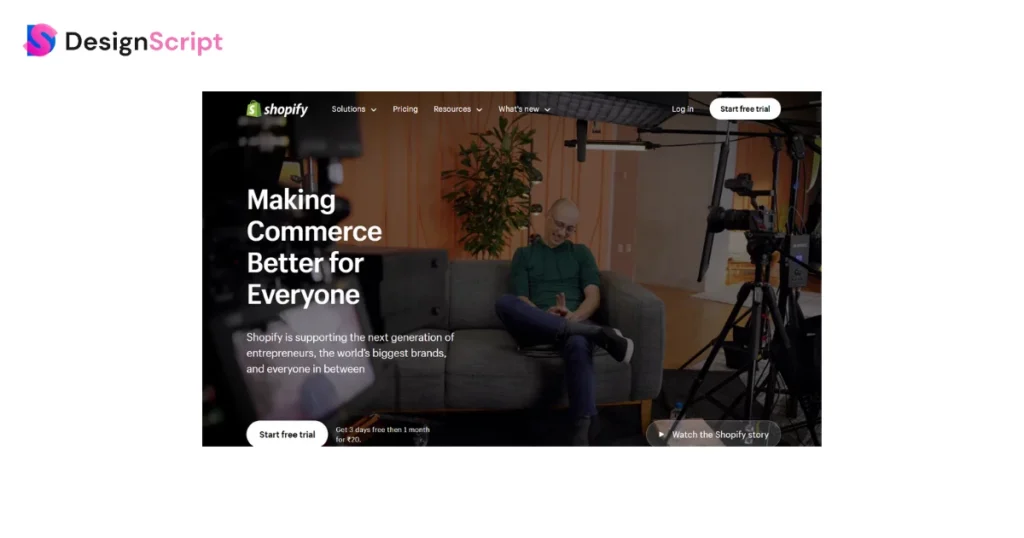
Shopify is an all-in-one e-commerce platform designed specifically for building online stores. Suppose your dream is to sell products online. In that case, Shopify makes it easy with its user-friendly interface and comprehensive suite of e-commerce features. This includes managing your inventory, creating shopping carts, securing payment gateways to accept online transactions, and even built-in marketing tools. Shopify offers plans to businesses of all sizes, with pricing based on transaction volume and the features you need. So, you’re ready to turn your product idea into a thriving online store. In that case, Shopify is a powerful platform to consider.
6. Concrete
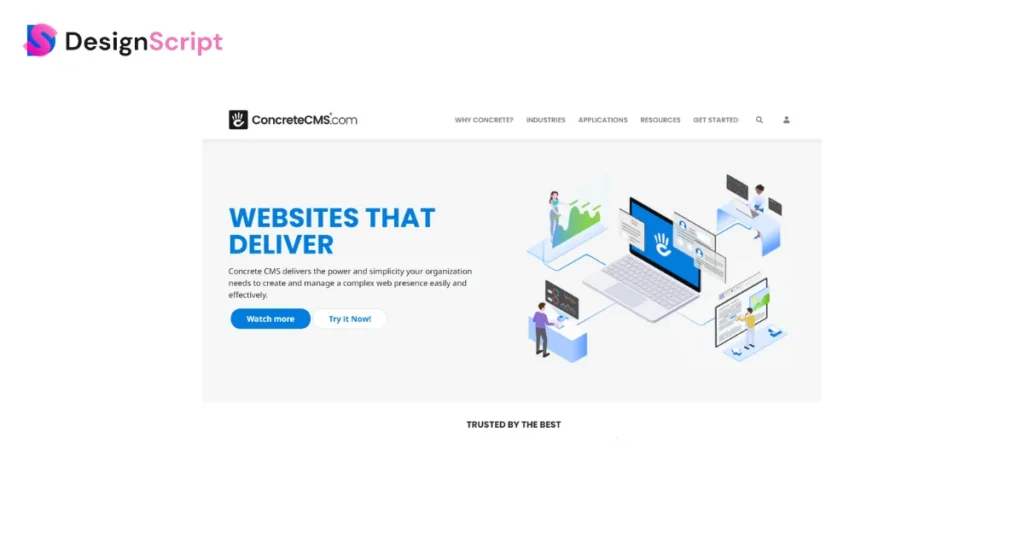
Concrete content management systems strike a perfect balance between user-friendliness and powerful features. Imagine a system that empowers both content creators and developers. That’s Concrete in a nutshell. An intuitive interface for editing content directly on the page allows anyone on your team to update your website, regardless of technical expertise easily. But be aware of its ease of use. Concrete boasts a powerful core for developers to build custom features and integrations, making it a great choice for websites with specific needs. Whether you’re a small business or a large organization with a team managing your website, Concrete content management system offers a user-friendly and scalable solution.
7. Contentful
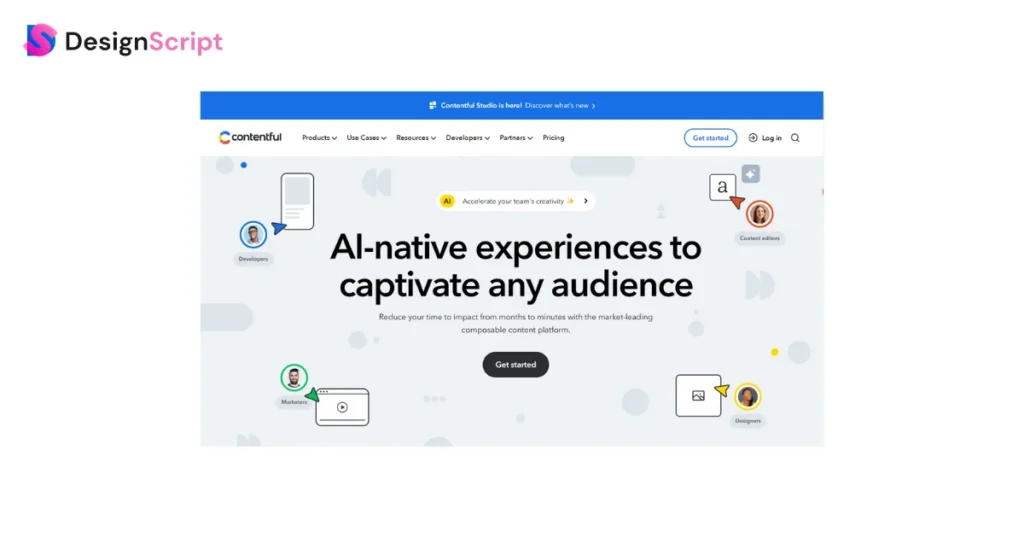
Contentful takes a different approach to content management systems. Unlike the website builders mentioned previously, Contentful isn’t designed to build your entire website. Instead, it acts as a central hub for managing your website content, like text, images, and videos. Think of it as a giant, organized content library. This headless content management systems approach offers incredible flexibility and you can create and edit your content in Contentful, then easily publish it to any platform, be it your website, mobile app, or even a smart TV. This makes it a great choice for businesses that need to deliver content across multiple channels. Contentful offers a user-friendly interface and various pricing plans to suit your needs.
8. Bynder
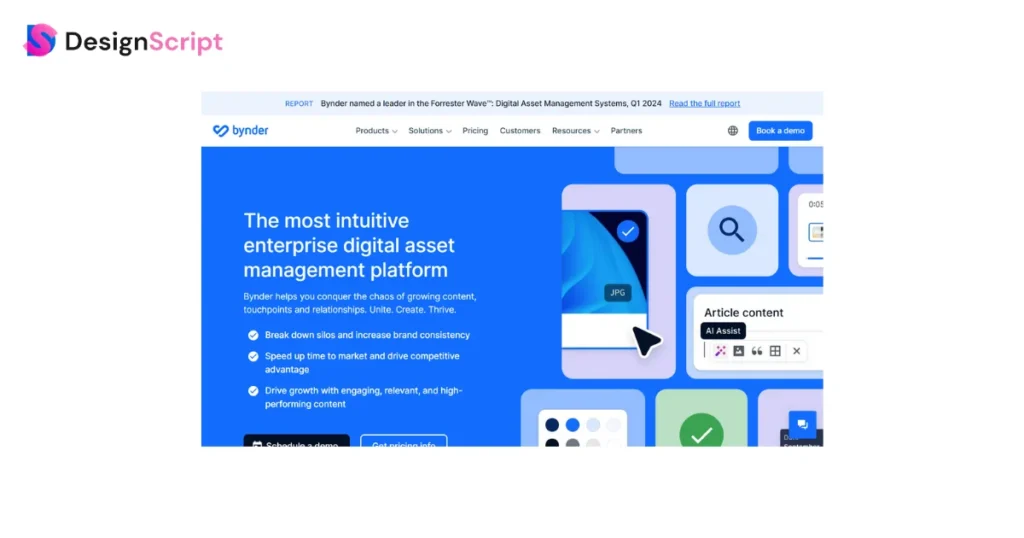
While our focus has been on general website content management systems (CMS), Bynder takes a different approach. Bynder is a specialized SaaS platform for Digital Asset Management (DAM). If you deal with a high volume of digital assets like images, videos, and marketing materials, Bynder can be a game-changer. It offers a central hub to store, organize, and share all your digital content, ensuring everyone on your team can access the new versions and brand-compliant materials. Bynder streamlines collaboration and helps maintain brand consistency, saving you time and frustration in the long run.
9. Magento (Adobe Commerce)
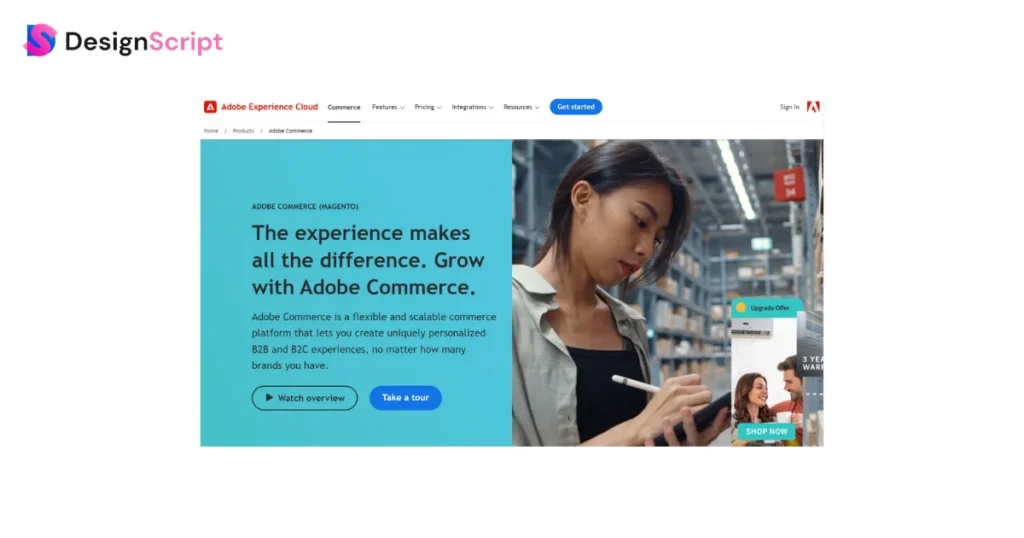
Magento (now Adobe Commerce), a simple content management system, wouldn’t do it justice. This is a powerful e-commerce platform. It’s designed for businesses that want to build feature-rich online stores. Think of it as a giant shopping mall, compared to small neighborhood shops built with other content management systems. Magento offers many tools to manage your business. You can use it to handle products, inventory, secure payments, and marketing campaigns. It may take longer to learn than beginner-friendly options. But Magento’s strength is its ability to handle large, high-traffic online stores. If you want to scale your online business and have the resources to invest, Magento could be the perfect platform. It can help turn your vision into a thriving virtual marketplace.
10. HubSpot CMS Hub
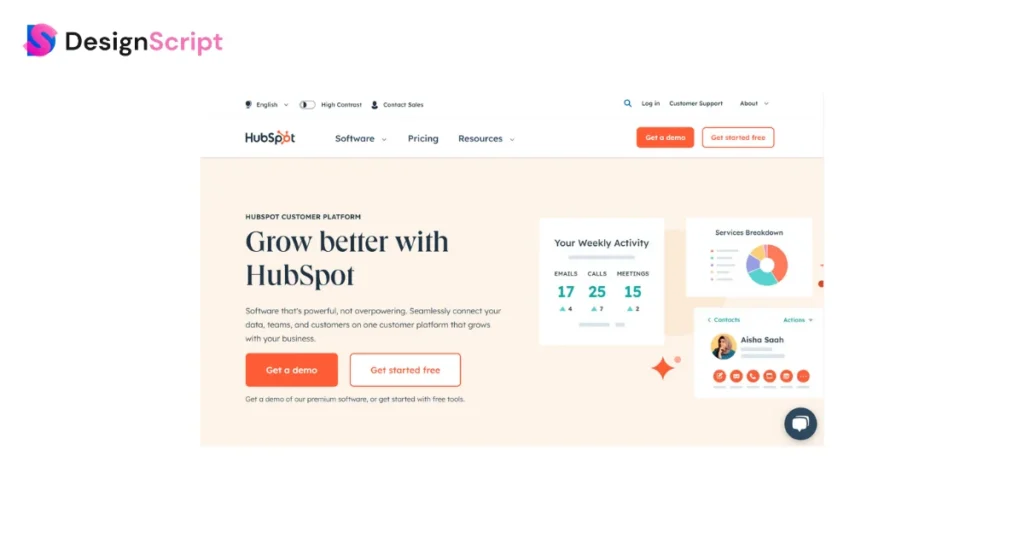
HubSpot content management system Hub caters to businesses looking for a content management system that integrates seamlessly with marketing tools. Imagine a content management system designed with marketers in mind! HubSpot offers a user-friendly drag-and-drop editor for building your website. Still, its true strength lies in its built-in marketing features. These include SEO recommendations to improve search engine ranking, tools to nurture leads with email marketing, and analytics to track website traffic and visitor behavior. HubSpot content management system Hub integrates perfectly, offering a centralized platform for managing your website content and marketing efforts.
11. Sitecore
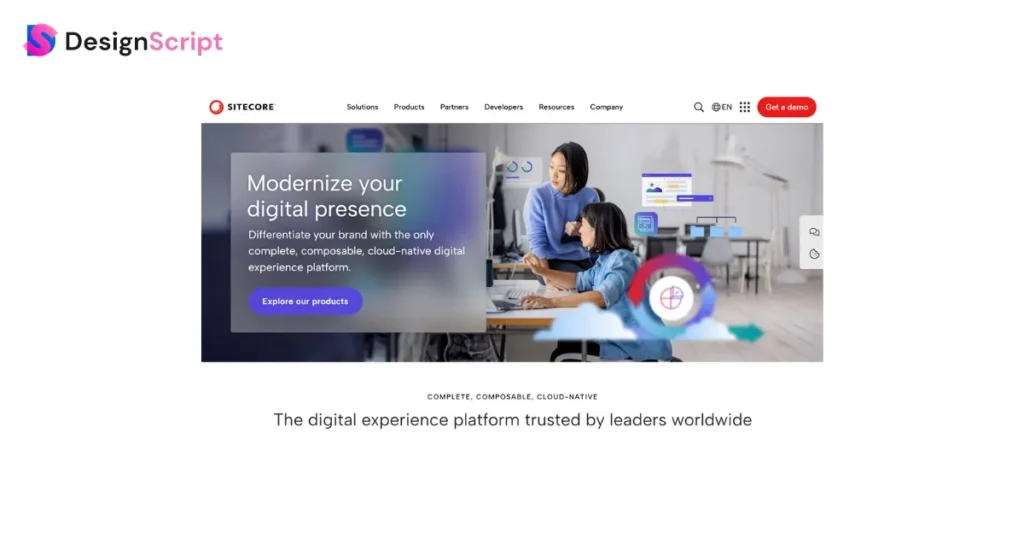
Sitecore offers a cloud-based content management system (CMS) called Sitecore Experience Manager (XM) Cloud. This SaaS solution eliminates the need to install and maintain your software or hardware. Instead, you access the CMS through a web browser. This makes it easier for your team to manage, publish and create content for your website. Additionally, Sitecore XM Cloud is a headless content management system, meaning the content creation and presentation are separate. This permits for greater flexibility in delivering content across different channels.
How to choose the right CMS for your SaaS website?
Choosing the right content management system for your SaaS website can feel overwhelming. This guide will help you with the key factors and select the perfect platform for your needs.
1. Features and integrations
The functionalities offered by your content management system will significantly impact your content creation process. Consider the content you’ll be crafting, whether blog posts, landing pages, articles, or anything else. Make sure the content management system you choose has the tools and features to manage this content easily.
2. Ease of use
A user-friendly content management system can save your team significant time and frustration. The user interface (UI) should be intuitive and easy to navigate for everyone using it, from content creators to marketers. Features like a drag-and-drop editor or a WYSIWYG (What You See Is What You Get) editor can be a big plus, as they allow users to see just how their content will appear on the published website without knowing any coding.
3. Pricing
SaaS CMS platforms typically have monthly or annual subscription fees. It’s important to consider your budget and choose a plan that scales with your needs. Many platforms offer free trials to test-drive the platform before committing to a paid plan.This lets you get a feel for the features and ensure they fit your workflow well before making a financial investment.
4. Scalability
As your SaaS business grows, your website traffic will inevitably increase. The last thing you want is for your content management system to need help to handle this growth and cause performance issues. Ensure the content management system you choose can handle your current traffic volume and scale effectively as your business expands.
5. Security
The security of your website and user data is paramount. Your content management system should offer strong security measures to protect your important information from cyber threats. Regular security updates and data backup options are crucial. Look for a content management system provider that prioritizes security and takes steps to mitigate potential risks.
6. Support
Reliable customer support is essential, especially when encountering issues or having questions. Look for a content management system provider offering comprehensive support options like live chat, email, or phone support. An active developer community can also be a valuable resource.
Find Your Ideal SaaS Content Management System Platform Today
Choosing the right SaaS CMS can feel like searching for a needle in a haystack. But don’t worry—we’ve got you covered! This guide has been your one-stop shop for navigating the exciting world of SaaS content management systems. We explored the 11 best SaaS content management system options, unpacking their strengths and what makes them unique. Whether you’re a beginner looking for a user-friendly platform or a seasoned pro needing ultimate control, a perfect content management system fits you.
Consider your specific needs, budget, and technical expertise before choosing. Remember, the ideal content management system should seamlessly integrate with your workflow. By carefully evaluating features, ease of use, scalability, and security, you’ll be ready to select the perfect engine to power your SaaS website’s content creation journey.
So, what are you waiting for? Take the next step and explore the best SaaS CMS options today. Whether you’re building your first website or optimizing an existing one, there’s a CMS out there that fits your needs.
Dive into the world of SaaS CMS options, and start transforming your content strategy now!
FAQs
SaaS CMS lets anyone easily create, edit, and publish content. Focus on your message, not the tech. Work from anywhere and scale as you grow—SaaS CMS makes website management a breeze.
The best depends on you! Popular options include Wix, WordPress, and Contentful. When choosing, consider your needs and budget.
Pick a user-friendly content management system with drag-and-drop for easy design. Ensure it supports your content types, such as blogs, images, etc., and is mobile-friendly.
A headless CMS separates the backend (content) from the frontend (presentation). This allows for greater flexibility, faster time-to-market, and the ability to deliver content to multiple channels.
Consider your team’s technical expertise, the complexity of your content, and your budget. Evaluate factors like ease of use, scalability, security, and integration capabilities to make an informed decision.

